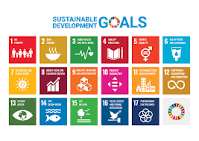HOW TRADITIONAL BELIEFS AFFECT WOMEN’S CHOICES AND FREEDOMS IN NEPAL
Traditional beliefs continue to exert a profound influence on the lives of women in Nepal, shaping their choices, freedoms, and opportunities in ways that are both visible and subtle. Rooted in centuries-old cultural norms, religious doctrines, and social expectations, these beliefs often define gender roles, family structures, and moral codes that govern women’s behavior and status. While Nepal has made significant strides in promoting gender equality through legal reforms and education, traditional values remain deeply embedded, sometimes constraining women’s autonomy and aspirations.
In many Nepali communities, traditional
beliefs emphasize the role of women primarily as caretakers, daughters-in-law,
and mothers, responsible for maintaining family honor and fulfilling household
duties. This cultural framework often limits women’s freedom to pursue
education, career ambitions, or personal interests. The expectation to
prioritize family needs over individual desires can restrict women’s
decision-making power, both within the home and in the broader society.
Religious beliefs also play a critical
role in shaping gender norms. Practices influenced by Hinduism, Buddhism, and
indigenous faiths may prescribe behaviors and rituals that reinforce
patriarchal structures. For instance, notions of purity and pollution linked to
menstruation or widowhood can lead to social exclusion or discrimination
against women. Rituals and festivals, while culturally significant, sometimes
reinforce traditional gender hierarchies by assigning women subordinate roles.
Moreover, traditional beliefs often
intersect with caste and ethnic identities, further complicating women’s
experiences. In certain groups, rigid customs around marriage, inheritance, and
social interaction impose additional restrictions on women’s freedoms.
Practices such as child marriage, dowry expectations, or limited mobility
persist in some areas, despite legal prohibitions, reflecting the resilience of
cultural norms over formal laws.
The impact of these beliefs extends beyond
personal choices to affect women’s participation in public life and governance.
Social expectations can discourage women from engaging in politics, leadership
roles, or community decision-making. When women do step into such roles, they
may face resistance or skepticism rooted in traditional views about gender
capabilities and roles.
However, it is important to recognize
that traditional beliefs are not static. Many Nepali women and communities are
actively negotiating, challenging, and reinterpreting cultural norms to expand
women’s freedoms. Education, exposure to global ideas, and advocacy by women’s
rights groups have empowered many to question restrictive practices and seek
greater equality. Legal reforms, including laws against gender-based violence
and discrimination, provide important tools for change, though implementation
remains uneven.
In conclusion, traditional beliefs in
Nepal continue to shape women’s choices and freedoms in significant ways, often
reinforcing patriarchal norms that limit autonomy. Yet, the evolving social
landscape reveals dynamic processes of resistance and transformation.
Understanding the deep cultural roots of these beliefs is essential to
promoting gender equality in Nepal, ensuring that efforts to expand women’s rights
are both culturally sensitive and effective. By bridging tradition with modern
values, Nepal can work toward a society where women enjoy full freedom to make
choices and contribute equally to all spheres of life.

Comments
Post a Comment